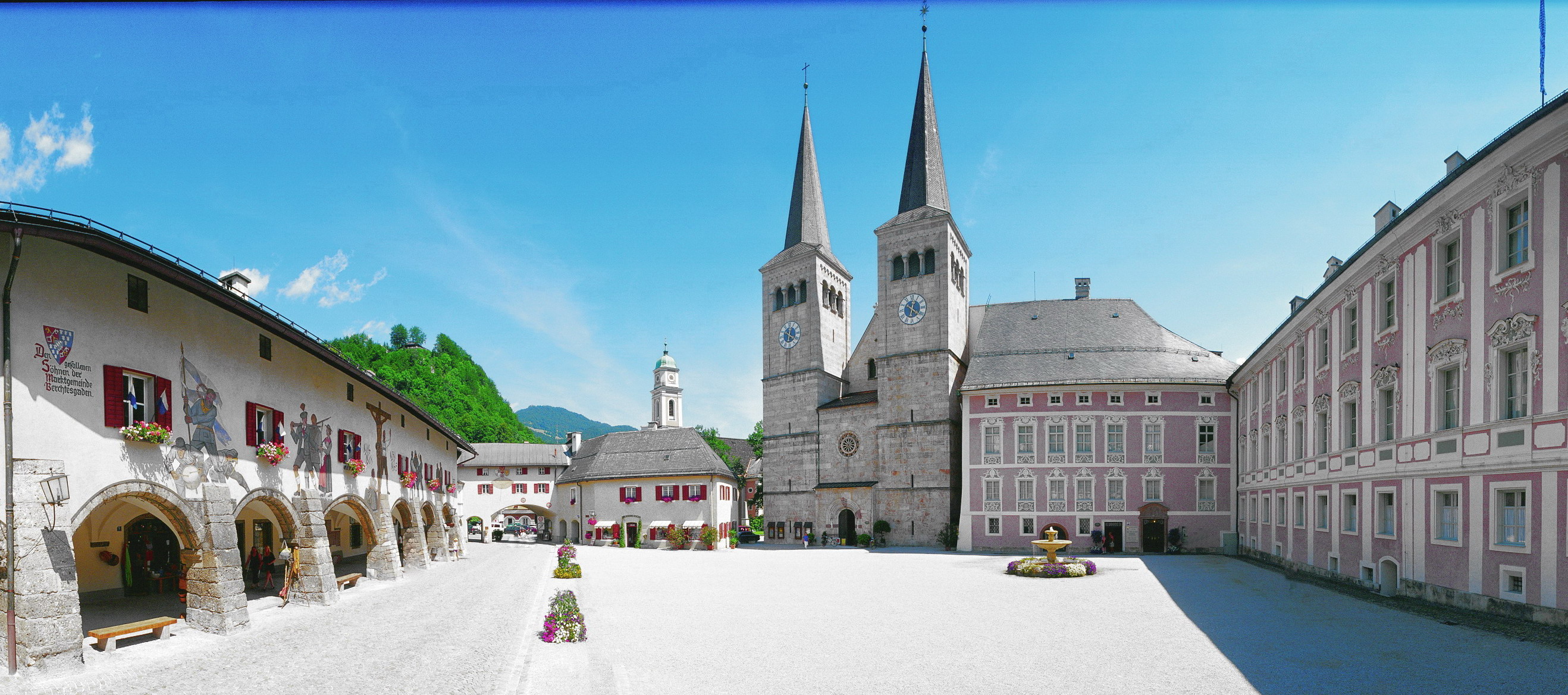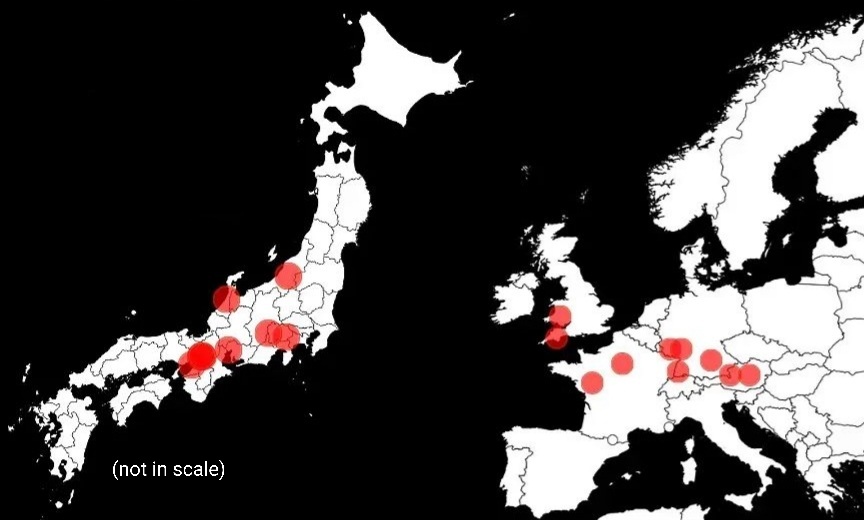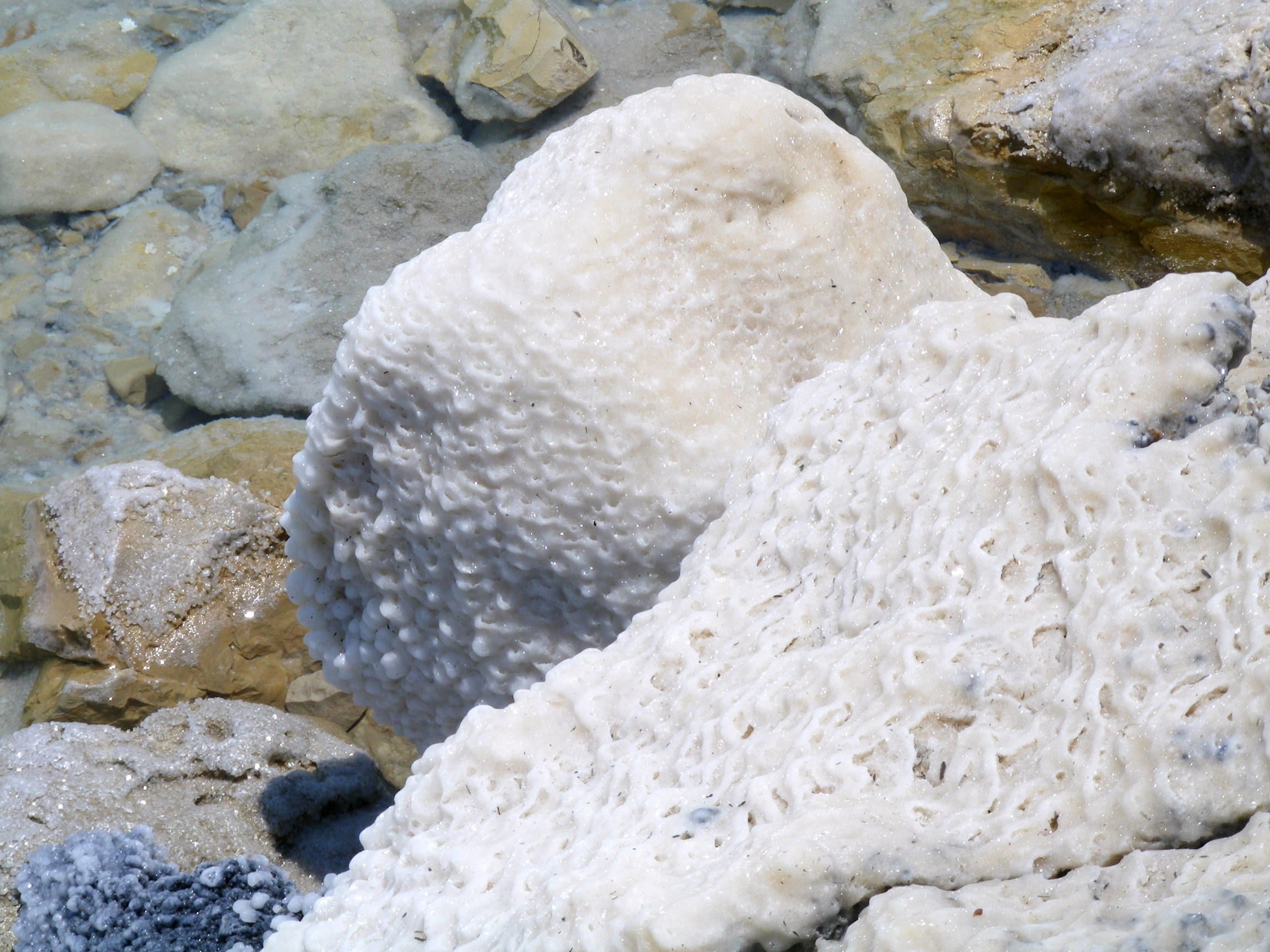|
Salzbergwerk Berchtesgaden
Salzbergwerk Berchtesgaden is the oldest active salt mine in Germany, in which salt is mainly extracted in the wet, and also a showcase in Berchtesgaden, Bavaria. History The salt mining industry in Berchtesgaden formed before the 13th century and was the economic backbone of the Berchtesgaden Provostry. Already Eberwin, the first Stiftspropst of Berchtesgaden, had access to the first salt springs during his reign (1101-1142). Propst Dietrich (1174-1178) was the first to break down the salt on the estates of the monastery Berchtesgaden, but also began to trade with it. Tourist attraction A visit to the mine is open for tourists and is used annually by about 330,000 visitors. The track length of the visitor mine is about 1400 meters and vehicles used for passenger transport are from 1995. The track is powered by a direct current of 400 volts supplied via a lateral current rail. See also *List of oldest companies References ''Article contains translated text from : ... [...More Info...] [...Related Items...] OR: [Wikipedia] [Google] [Baidu] |
Salt Mining
Salt mining extracts natural salt deposits from underground. The mined salt is usually in the form of halite (commonly known as rock salt), and extracted from evaporite formations. History Before the advent of the modern internal combustion engine and earth-moving equipment, mining salt was one of the most expensive and dangerous of operations because of rapid dehydration caused by constant contact with the salt (both in the mine passages and scattered in the air as salt dust) and of other problems caused by accidental excessive sodium intake. Salt is now plentiful, but until the Industrial Revolution, it was difficult to come by, and salt was often mined by slaves or prisoners. Life expectancy for the miners was low. Ancient China was among the earliest civilizations in the world with cultivation and trade in mined salt. They first discovered natural gas when they excavated rock salt. The Chinese writer, poet, and politician Zhang Hua of the Jin dynasty wrote in his book ... [...More Info...] [...Related Items...] OR: [Wikipedia] [Google] [Baidu] |
Berchtesgaden
Berchtesgaden () is a municipality in the district Berchtesgadener Land, Bavaria, in southeastern Germany, near the border with Austria, south of Salzburg and southeast of Munich. It lies in the Berchtesgaden Alps, south of Berchtesgaden; the Berchtesgaden National Park stretches along three parallel valleys. The Kehlstein mountain (), with its '' Kehlsteinhaus'' (Eagle's Nest) is located in the area. Etymology ''Berchtesgaden'', Upper Bavaria (Achental), earlier ''Perchterscadmen'', ''Perhtersgadem'', ''Berchirchsgadem'', ''Berchtoldesgadem''; the word underwent a Latin distortion of Old High German ''parach'', Romance ''bareca'' 'hay shed'. After the basic meaning was forgotten, a variant word of Old High German ''gadem'' 'room, one-room hut' was added, implying the same meaning: 'hay shed'. Cf. Old High German ''muosgadem'' 'spice room'. There was a folk etymology that supported a derivation based on the legendary figure of ''Frau'' Perchta (Berchta), a woman (''Holle ... [...More Info...] [...Related Items...] OR: [Wikipedia] [Google] [Baidu] |
Germany
Germany, officially the Federal Republic of Germany (FRG),, is a country in Central Europe. It is the most populous member state of the European Union. Germany lies between the Baltic and North Sea to the north and the Alps to the south. Its 16 constituent states have a total population of over 84 million in an area of . It borders Denmark to the north, Poland and Czechia to the east, Austria and Switzerland to the south, and France, Luxembourg, Belgium, and the Netherlands to the west. The nation's capital and most populous city is Berlin and its main financial centre is Frankfurt; the largest urban area is the Ruhr. Settlement in what is now Germany began in the Lower Paleolithic, with various tribes inhabiting it from the Neolithic onward, chiefly the Celts. Various Germanic tribes have inhabited the northern parts of modern Germany since classical antiquity. A region named Germania was documented before AD 100. In 962, the Kingdom of Germany formed the ... [...More Info...] [...Related Items...] OR: [Wikipedia] [Google] [Baidu] |
Salt Mine
Salt mining extracts natural salt deposits from underground. The mined salt is usually in the form of halite (commonly known as rock salt), and extracted from evaporite formations. History Before the advent of the modern internal combustion engine and earth-moving equipment, mining salt was one of the most expensive and dangerous of operations because of rapid dehydration caused by constant contact with the salt (both in the mine passages and scattered in the air as salt dust) and of other problems caused by accidental excessive sodium intake. Salt is now plentiful, but until the Industrial Revolution, it was difficult to come by, and salt was often mined by slaves or prisoners. Life expectancy for the miners was low. Ancient China was among the earliest civilizations in the world with cultivation and trade in mined salt. They first discovered natural gas when they excavated rock salt. The Chinese writer, poet, and politician Zhang Hua of the Jin dynasty wrote in his boo ... [...More Info...] [...Related Items...] OR: [Wikipedia] [Google] [Baidu] |
Bavaria
Bavaria ( ; ), officially the Free State of Bavaria (german: Freistaat Bayern, link=no ), is a state in the south-east of Germany. With an area of , Bavaria is the largest German state by land area, comprising roughly a fifth of the total land area of Germany. With over 13 million inhabitants, it is second in population only to North Rhine-Westphalia, but due to its large size its population density is below the German average. Bavaria's main cities are Munich (its capital and largest city and also the third largest city in Germany), Nuremberg, and Augsburg. The history of Bavaria includes its earliest settlement by Iron Age Celtic tribes, followed by the conquests of the Roman Empire in the 1st century BC, when the territory was incorporated into the provinces of Raetia and Noricum. It became the Duchy of Bavaria (a stem duchy) in the 6th century AD following the collapse of the Western Roman Empire. It was later incorporated into the Holy Roman Empire, ... [...More Info...] [...Related Items...] OR: [Wikipedia] [Google] [Baidu] |
Berchtesgaden Provostry
Berchtesgaden Provostry or the Prince-Provostry of Berchtesgaden (german: Fürstpropstei Berchtesgaden) was an immediate (') principality of the Holy Roman Empire, held by a canonry (a collegiate foundation of Canons Regular) led by a Prince-Provost. Geography The territory comprised the Alpine Berchtesgaden hollow, namely the modern communities of Berchtesgaden, Bischofswiesen, Marktschellenberg, Ramsau and Schönau am Königssee, located in the present-day German state of Bavaria, as well as a number of estates further afield. The location of the monastery was strategically important. Firstly, it is in an area possessing immensely valuable salt deposits, and was situated in such a way that it was able to act as a buffer state between its much larger neighbours, the Duchy of Bavaria and the Archbishopric of Salzburg, and to make this situation work to its advantage. Secondly, the Berchtesgaden valley is almost entirely enclosed by high mountains, except for a single p ... [...More Info...] [...Related Items...] OR: [Wikipedia] [Google] [Baidu] |
List Of Oldest Companies
This list of the oldest companies in the world includes brands and companies, excluding associations and educational, government, or religious organizations. To be listed, a brand or company name must remain operating, either in whole or in part, since inception. Note however that such claims are often open to question and should be researched further before citing them. Statistics According to a report published by the Bank of Korea in 2008 that looked at 41 countries, there were 5,586 companies older than 200 years. Of these, 3,146 (56%) are in Japan, 837 (15%) in Germany, 222 (4%) in the Netherlands, and 196 (3%) in France. Of the companies with more than 100 years of history, most of them (89%) employ fewer than 300 people. In Japan, very old companies, called ''shinise'', are particularly prestigious. A nationwide Japanese survey counted more than 21,000 companies older than 100 years as of September 30, 2009. Founded before 1300 1300 to 1399 1400 to 1499 ... [...More Info...] [...Related Items...] OR: [Wikipedia] [Google] [Baidu] |
German Wikipedia
The German Wikipedia (german: Deutschsprachige Wikipedia) is the German-language edition of Wikipedia, a free and publicly editable online encyclopedia. Founded on March 16, 2001, it is the second-oldest Wikipedia (after the English Wikipedia), and with articles, at present () the -largest edition of Wikipedia by number of articles, behind English Wikipedia and the mostly bot-generated Cebuano Wikipedia.ikipedia-l">Jimmy Wales [Wikipedia-l/nowiki>Alternative language Wikipedias, 16 March 2001List of Wikipedias/Table meta.wikimedia.org, Statistics It has the second-largest number of edits behind the English Wikipedia and over 260,000 disambiguation pages. On November 7, 2011, it became the second edition of Wikipedia, after the English edition, to exceed 100 million page edits. The German Wikipedia ... [...More Info...] [...Related Items...] OR: [Wikipedia] [Google] [Baidu] |
Salt Mines In Germany
Salt is a mineral composed primarily of sodium chloride (NaCl), a chemical compound belonging to the larger class of salts; salt in the form of a natural crystalline mineral is known as rock salt or halite. Salt is present in vast quantities in seawater. The open ocean has about of solids per liter of sea water, a salinity of 3.5%. Salt is essential for life in general, and saltiness is one of the basic human tastes. Salt is one of the oldest and most ubiquitous food seasonings, and is known to uniformly improve the taste perception of food, including otherwise unpalatable food. Salting, brining, and pickling are also ancient and important methods of food preservation. Some of the earliest evidence of salt processing dates to around 6,000 BC, when people living in the area of present-day Romania boiled spring water to extract salts; a salt-works in China dates to approximately the same period. Salt was also prized by the ancient Hebrews, Greeks, Romans, B ... [...More Info...] [...Related Items...] OR: [Wikipedia] [Google] [Baidu] |
Show Mines
A mine, i.e. an industrial facility for the underground extraction of mineral commodities In economics, a commodity is an economic good, usually a resource, that has full or substantial fungibility: that is, the market treats instances of the good as equivalent or nearly so with no regard to who produced them. The price of a co ..., has three operating phases: it may be open or running, or closed or it may be a working museum. Most mines are simply closed once they are no longer productive. For safety they are usually partially destroyed (filled in). However, many mines are at least partially accessible today to visitors. In such cases they may be referred to as show mines or visitor mines if the focus is mainly on visiting the former mine, or mining museums if the mine only forms part of a museum. Most show mines have been set up in abandoned mines. In recent decades, however, they are often established immediately after mining ceases, creating some jobs funded at least p ... [...More Info...] [...Related Items...] OR: [Wikipedia] [Google] [Baidu] |






